Top 7 AI Survey Question Types with Examples
Top 7 AI Survey Question Types with Examples
Top 7 AI Survey Question Types with Examples



Survey forms are a great tool to collect information and achieve specific business goals. But, how you frame your survey questions can make or break the survey response rate and completion rate to a greater extent. Understanding your survey goals, choosing the right survey questions types and asking the right questions helps you build a great survey form.
Different Types of AI Survey Questions
Here are 13 types of survey questions to help you deep dive into your target audience’s responses. Each question type has its own role and results that add to the overall survey form experience. It’s important to understand each question type before you include them into your survey form.
Multiple Choice Questions
IMost of your target audience prefer multiple choice questions, one of the most popular survey question types. They allow your survey respondents to choose one or more options from a list of predefined answers. Intuitive, easy to use, and easy-to-analyze data with mutually exclusive choices.
Using multiple choice questions provides an easier survey-taking experience for responders as the answer options are fixed. Adding to it, you’ll get structured survey responses with clean data for analysis.
Types of Multiple Choice Questions
Single-answer multiple choice questions work well for binary questions, questions with ratings, or nominal scales.
Multiple-answer multiple choice questions allow respondents to check off all the choices that apply to them.
“Other” answer option or comment field added to the multiple choice questions allow respondents to answer your questions in their own words. It minimizes bias in your survey results and gives additional context to answers that are not available in the list of predefined answers.
Rating Scale Questions
Rating scale questions or ordinal questions display a scale of any range (0 to 100, 1 to 10, etc.) as answer options. The respondent selects the number that most accurately represents their response.
For example, Net Promoter Score® survey questions are rating scale questions. They use a scale to gauge how likely customers would be to recommend their product or service. It’s important to give the respondent context to ranking questions and numerical rating scales explaining the value of the numbers on your scale.
Likert Scale Questions
Likert scale questions are the “do you agree or disagree” questions you often see in online ad surveys. They give respondents a range of options—for example, starting at “not at all likely” , scaling all the way up to “extremely likely” to gauge respondents’ opinions and feelings in a specific context. For example, customer satisfaction surveys use likert scales questions to to understand specific feedback.
Matrix Questions
If you want to ask a few questions in a row that have the same response options, matrix questions are your best option. Though they simplify survey responses, very large matrices can be confusing and difficult for survey respondents to take on mobile devices.
Dropdown Questions
The dropdown question is an easy way to display a long list of multiple choice answers without overwhelming your respondents. You can pair it up with a scrollable list of answers to choose from. Displaying all answer options at once can offer your respondents useful context about the question.
Demographic Questions
Use demographic survey questions if you’re interested in gathering information about a respondent’s age, occupation, lifestyle preferences or income level. When properly used, they allow you to segment your target audience into customer groups and gain better insights on your target audience.
Open-ended Questions
Open-ended survey questions allow respondents to type their answer into a comment field without any pre-set answer options. Text boxes are also a better option to collect survey data. For example, when used in customer survey forms, it allows them to offer valuable inputs in their own words and helps uncover deeper insights.
In traditional survey analysis, it’s difficult to quantify written answers for open-ended questions. Survey creators pair up open-ended questions with close-ended questions in quantitative marketing research. On the contrary, AI-powered survey forms give marketers and survey researchers a competitive advantage through built-in branching logic survey questions that are contextual and personalized to the survey respondents responses.
Conclusion
Understanding which survey question type to use can make or break your survey research. Most drag-and-drop survey form builders entrust the burden of what to ask and how to ask to the survey researcher or marketer. On the contrary, Metaforms survey form builder takes a deep-dive leveraging conversational AI to create next-generation survey form that chooses the most pertinent survey questions types and questions for your survey aligned with your survey goals.
With Metaforms, you provide the context and survey goals while the tool provides a hyper-personalized, highly contextual survey form that delivers an insightful survey report with meaningful data on your respondents and their responses. Try Metaforms today for free.
Survey forms are a great tool to collect information and achieve specific business goals. But, how you frame your survey questions can make or break the survey response rate and completion rate to a greater extent. Understanding your survey goals, choosing the right survey questions types and asking the right questions helps you build a great survey form.
Different Types of AI Survey Questions
Here are 13 types of survey questions to help you deep dive into your target audience’s responses. Each question type has its own role and results that add to the overall survey form experience. It’s important to understand each question type before you include them into your survey form.
Multiple Choice Questions
IMost of your target audience prefer multiple choice questions, one of the most popular survey question types. They allow your survey respondents to choose one or more options from a list of predefined answers. Intuitive, easy to use, and easy-to-analyze data with mutually exclusive choices.
Using multiple choice questions provides an easier survey-taking experience for responders as the answer options are fixed. Adding to it, you’ll get structured survey responses with clean data for analysis.
Types of Multiple Choice Questions
Single-answer multiple choice questions work well for binary questions, questions with ratings, or nominal scales.
Multiple-answer multiple choice questions allow respondents to check off all the choices that apply to them.
“Other” answer option or comment field added to the multiple choice questions allow respondents to answer your questions in their own words. It minimizes bias in your survey results and gives additional context to answers that are not available in the list of predefined answers.
Rating Scale Questions
Rating scale questions or ordinal questions display a scale of any range (0 to 100, 1 to 10, etc.) as answer options. The respondent selects the number that most accurately represents their response.
For example, Net Promoter Score® survey questions are rating scale questions. They use a scale to gauge how likely customers would be to recommend their product or service. It’s important to give the respondent context to ranking questions and numerical rating scales explaining the value of the numbers on your scale.
Likert Scale Questions
Likert scale questions are the “do you agree or disagree” questions you often see in online ad surveys. They give respondents a range of options—for example, starting at “not at all likely” , scaling all the way up to “extremely likely” to gauge respondents’ opinions and feelings in a specific context. For example, customer satisfaction surveys use likert scales questions to to understand specific feedback.
Matrix Questions
If you want to ask a few questions in a row that have the same response options, matrix questions are your best option. Though they simplify survey responses, very large matrices can be confusing and difficult for survey respondents to take on mobile devices.
Dropdown Questions
The dropdown question is an easy way to display a long list of multiple choice answers without overwhelming your respondents. You can pair it up with a scrollable list of answers to choose from. Displaying all answer options at once can offer your respondents useful context about the question.
Demographic Questions
Use demographic survey questions if you’re interested in gathering information about a respondent’s age, occupation, lifestyle preferences or income level. When properly used, they allow you to segment your target audience into customer groups and gain better insights on your target audience.
Open-ended Questions
Open-ended survey questions allow respondents to type their answer into a comment field without any pre-set answer options. Text boxes are also a better option to collect survey data. For example, when used in customer survey forms, it allows them to offer valuable inputs in their own words and helps uncover deeper insights.
In traditional survey analysis, it’s difficult to quantify written answers for open-ended questions. Survey creators pair up open-ended questions with close-ended questions in quantitative marketing research. On the contrary, AI-powered survey forms give marketers and survey researchers a competitive advantage through built-in branching logic survey questions that are contextual and personalized to the survey respondents responses.
Conclusion
Understanding which survey question type to use can make or break your survey research. Most drag-and-drop survey form builders entrust the burden of what to ask and how to ask to the survey researcher or marketer. On the contrary, Metaforms survey form builder takes a deep-dive leveraging conversational AI to create next-generation survey form that chooses the most pertinent survey questions types and questions for your survey aligned with your survey goals.
With Metaforms, you provide the context and survey goals while the tool provides a hyper-personalized, highly contextual survey form that delivers an insightful survey report with meaningful data on your respondents and their responses. Try Metaforms today for free.
Survey forms are a great tool to collect information and achieve specific business goals. But, how you frame your survey questions can make or break the survey response rate and completion rate to a greater extent. Understanding your survey goals, choosing the right survey questions types and asking the right questions helps you build a great survey form.
Different Types of AI Survey Questions
Here are 13 types of survey questions to help you deep dive into your target audience’s responses. Each question type has its own role and results that add to the overall survey form experience. It’s important to understand each question type before you include them into your survey form.
Multiple Choice Questions
IMost of your target audience prefer multiple choice questions, one of the most popular survey question types. They allow your survey respondents to choose one or more options from a list of predefined answers. Intuitive, easy to use, and easy-to-analyze data with mutually exclusive choices.
Using multiple choice questions provides an easier survey-taking experience for responders as the answer options are fixed. Adding to it, you’ll get structured survey responses with clean data for analysis.
Types of Multiple Choice Questions
Single-answer multiple choice questions work well for binary questions, questions with ratings, or nominal scales.
Multiple-answer multiple choice questions allow respondents to check off all the choices that apply to them.
“Other” answer option or comment field added to the multiple choice questions allow respondents to answer your questions in their own words. It minimizes bias in your survey results and gives additional context to answers that are not available in the list of predefined answers.
Rating Scale Questions
Rating scale questions or ordinal questions display a scale of any range (0 to 100, 1 to 10, etc.) as answer options. The respondent selects the number that most accurately represents their response.
For example, Net Promoter Score® survey questions are rating scale questions. They use a scale to gauge how likely customers would be to recommend their product or service. It’s important to give the respondent context to ranking questions and numerical rating scales explaining the value of the numbers on your scale.
Likert Scale Questions
Likert scale questions are the “do you agree or disagree” questions you often see in online ad surveys. They give respondents a range of options—for example, starting at “not at all likely” , scaling all the way up to “extremely likely” to gauge respondents’ opinions and feelings in a specific context. For example, customer satisfaction surveys use likert scales questions to to understand specific feedback.
Matrix Questions
If you want to ask a few questions in a row that have the same response options, matrix questions are your best option. Though they simplify survey responses, very large matrices can be confusing and difficult for survey respondents to take on mobile devices.
Dropdown Questions
The dropdown question is an easy way to display a long list of multiple choice answers without overwhelming your respondents. You can pair it up with a scrollable list of answers to choose from. Displaying all answer options at once can offer your respondents useful context about the question.
Demographic Questions
Use demographic survey questions if you’re interested in gathering information about a respondent’s age, occupation, lifestyle preferences or income level. When properly used, they allow you to segment your target audience into customer groups and gain better insights on your target audience.
Open-ended Questions
Open-ended survey questions allow respondents to type their answer into a comment field without any pre-set answer options. Text boxes are also a better option to collect survey data. For example, when used in customer survey forms, it allows them to offer valuable inputs in their own words and helps uncover deeper insights.
In traditional survey analysis, it’s difficult to quantify written answers for open-ended questions. Survey creators pair up open-ended questions with close-ended questions in quantitative marketing research. On the contrary, AI-powered survey forms give marketers and survey researchers a competitive advantage through built-in branching logic survey questions that are contextual and personalized to the survey respondents responses.
Conclusion
Understanding which survey question type to use can make or break your survey research. Most drag-and-drop survey form builders entrust the burden of what to ask and how to ask to the survey researcher or marketer. On the contrary, Metaforms survey form builder takes a deep-dive leveraging conversational AI to create next-generation survey form that chooses the most pertinent survey questions types and questions for your survey aligned with your survey goals.
With Metaforms, you provide the context and survey goals while the tool provides a hyper-personalized, highly contextual survey form that delivers an insightful survey report with meaningful data on your respondents and their responses. Try Metaforms today for free.
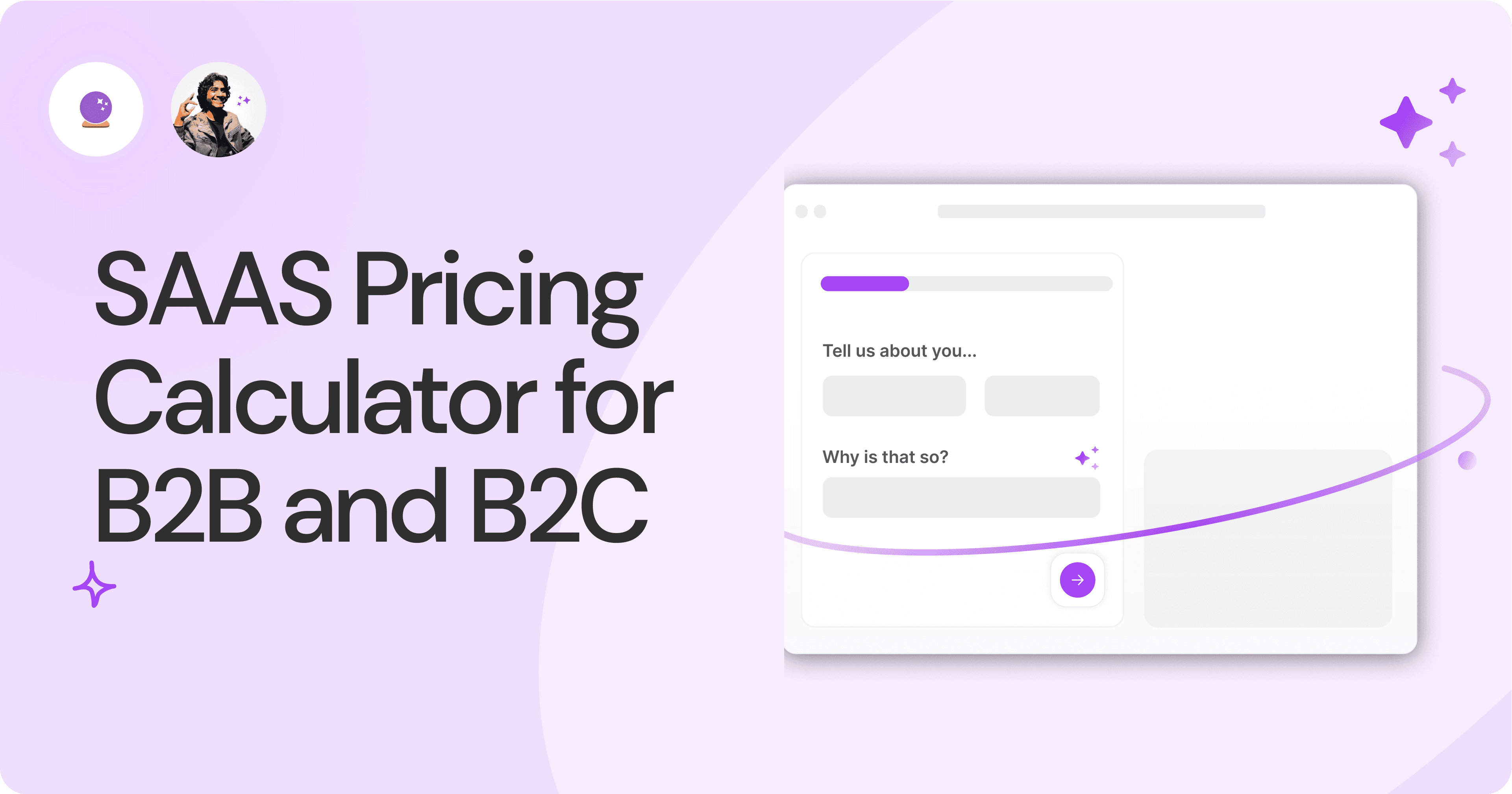
SAAS Pricing Calculators: B2B v B2C Online Forms.
The SaaS pricing calculator is an essential tool for both B2B and B2C SaaS companies. But how do you build it, right? We have you covered.
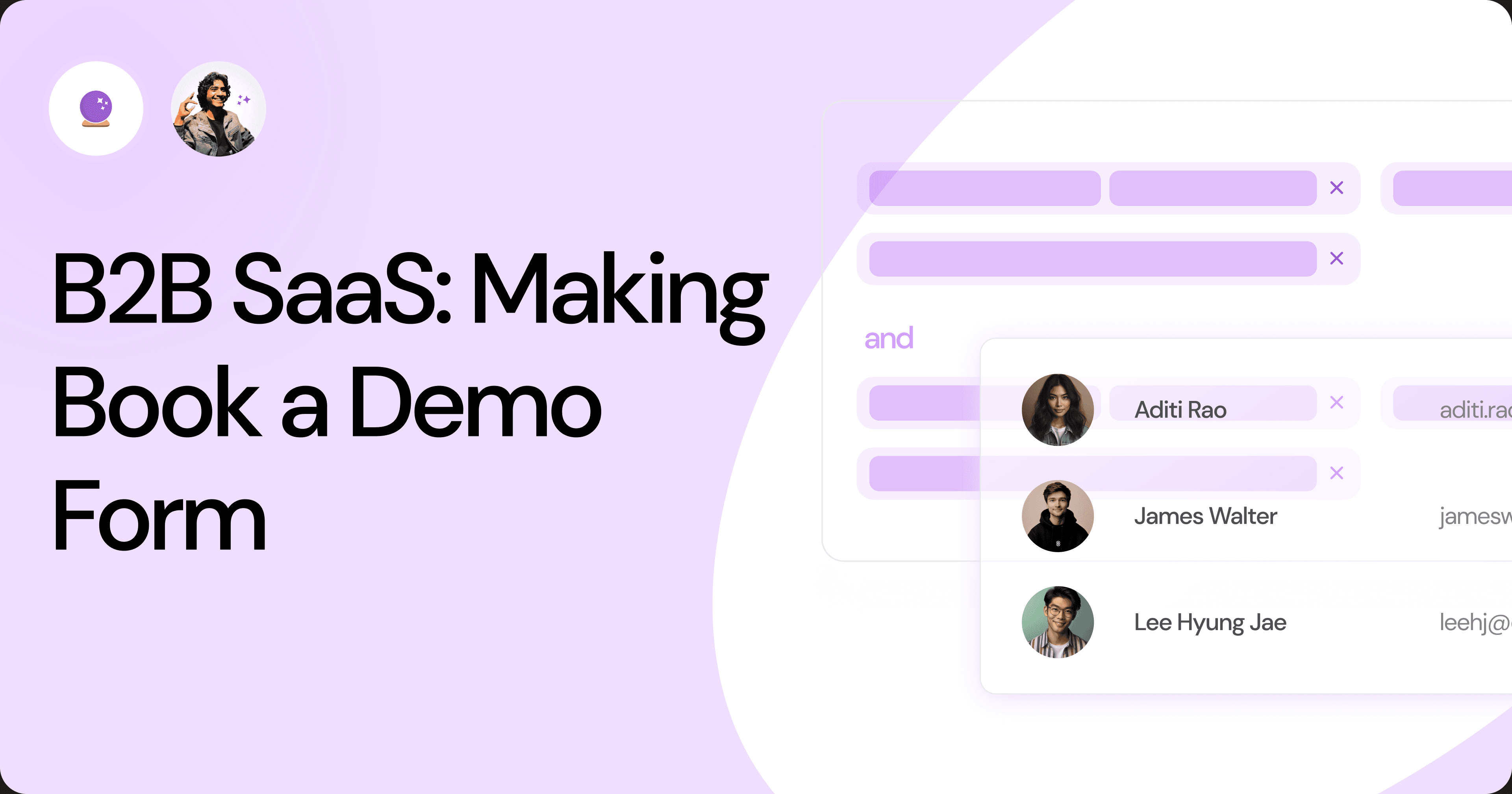
B2B SaaS: Making Book a Demo Form.
Having the perfect book a demo form for B2B SaaS is the first step in capturing leads. There are a few fundamental techniques to get this form right. Read on.

How to Get Started With SaaS Onboarding.
SaaS onboarding is essential for customer onboarding in B2B and B2C SaaS. Let’s understand its fundamentals, including the metrics.
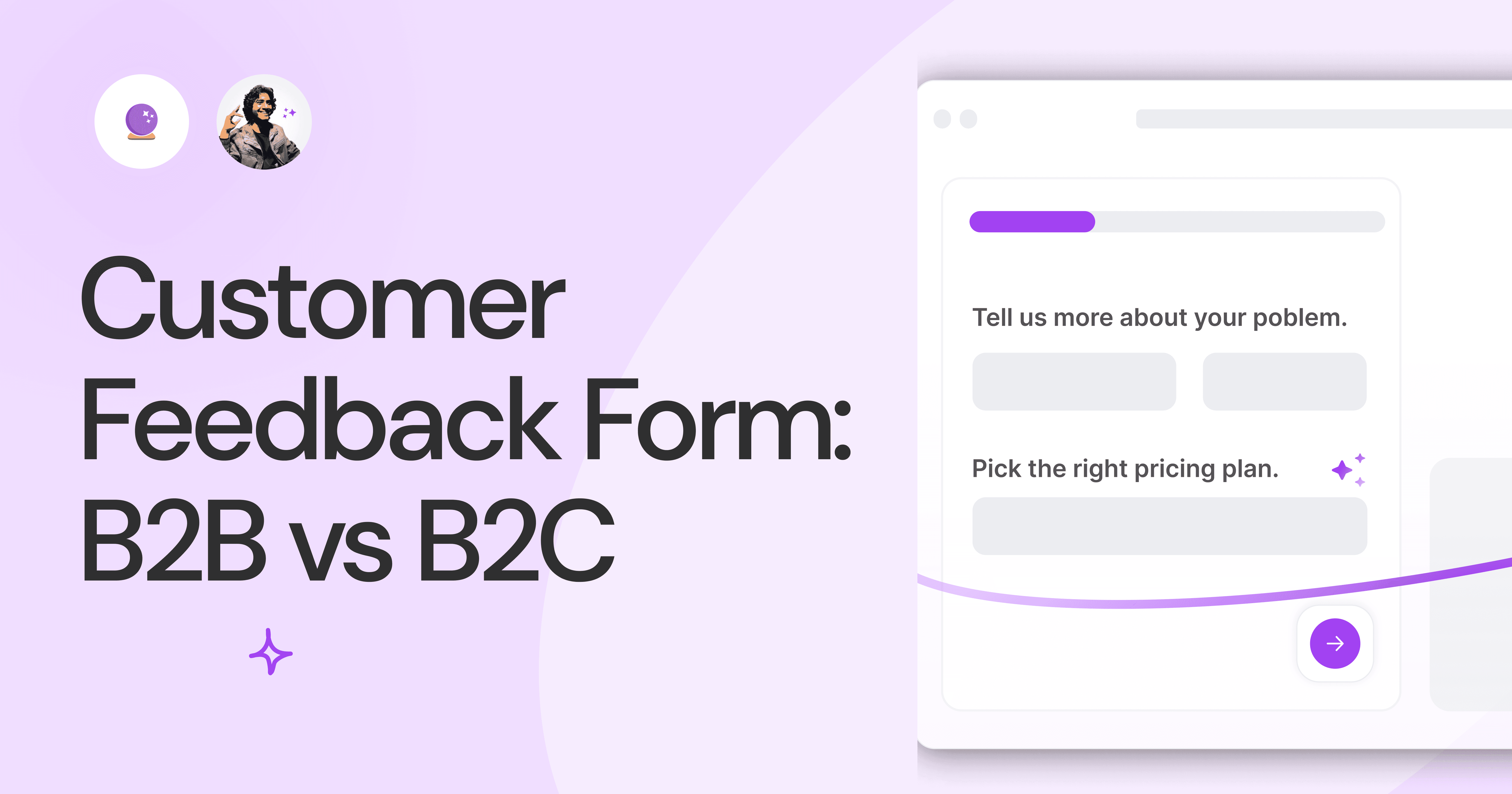
Customer Feedback Form: B2B vs B2C.
Why is customer feedback important? Because it dictates progress on B2B and B2B products and services for the customer to meet their goals.
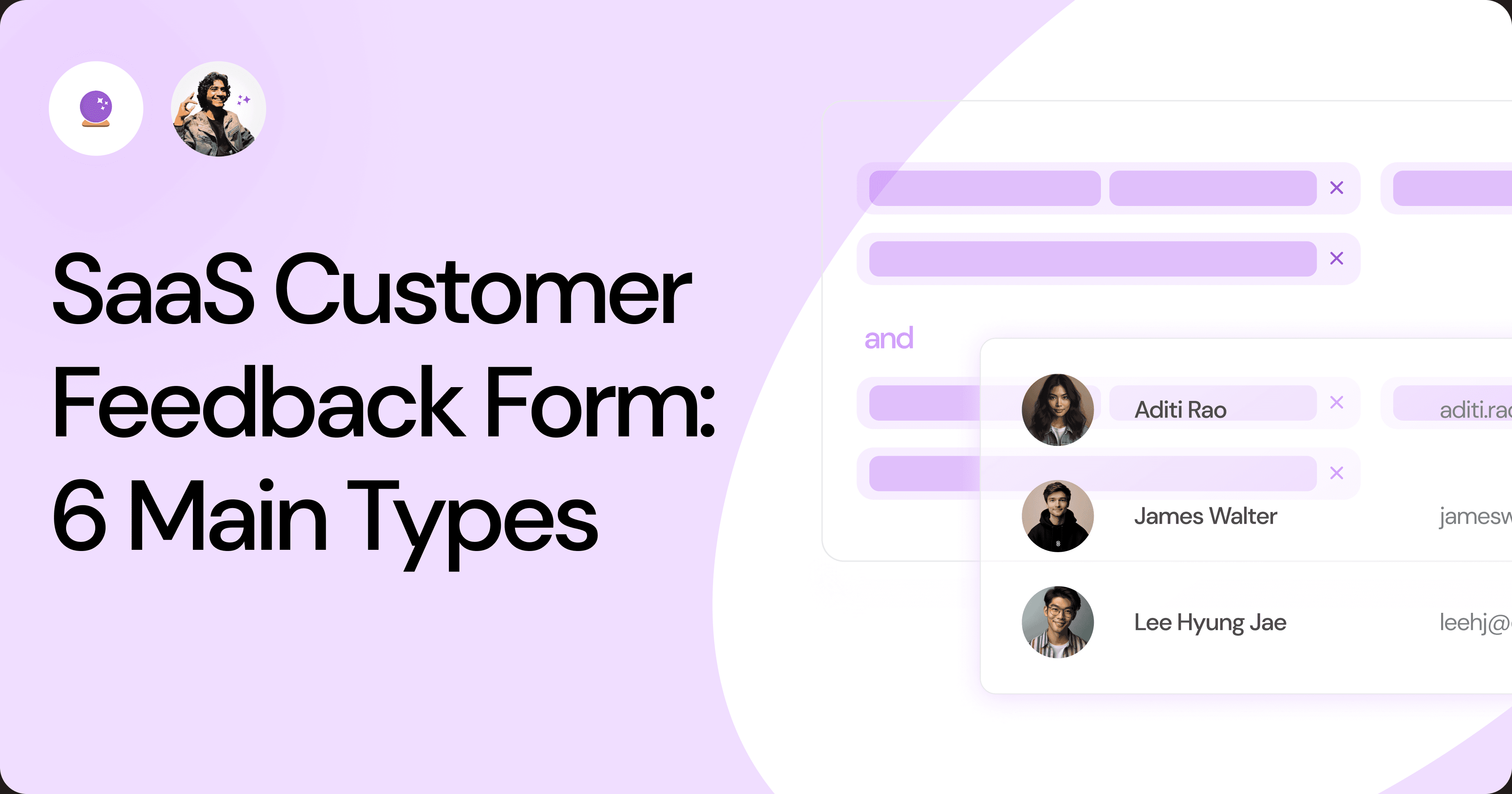
SaaS Customer Feedback Form: 6 Main Types.
As much as SaaS is self-serve, the role of a customer feedback form is highly relevant. There are different types, each with its use case and sections.
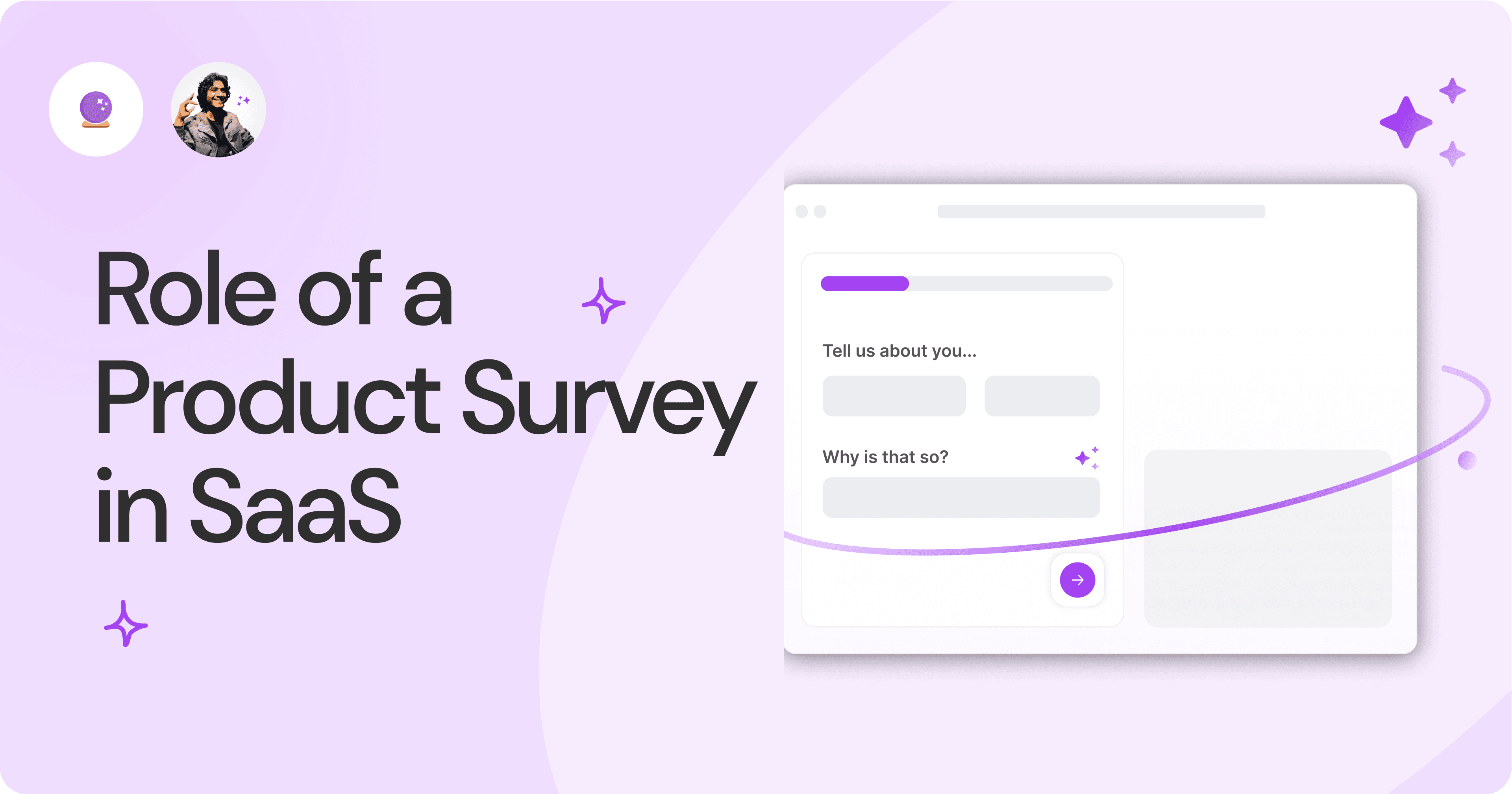
Role of a Product Survey in SaaS.
SaaS is all about creating products for specific use cases. This is where a product survey becomes all the more important to know the user deeply.

Should You Do a SaaS Market Survey?
Every SaaS company wants to grow fast. But without a market survey, growth isn't possible or sustainable. Let’s see how to do a market survey.

SAAS Pricing Calculators: B2B v B2C Online Forms.
The SaaS pricing calculator is an essential tool for both B2B and B2C SaaS companies. But how do you build it, right? We have you covered.

B2B SaaS: Making Book a Demo Form.
Having the perfect book a demo form for B2B SaaS is the first step in capturing leads. There are a few fundamental techniques to get this form right. Read on.

How to Get Started With SaaS Onboarding.
SaaS onboarding is essential for customer onboarding in B2B and B2C SaaS. Let’s understand its fundamentals, including the metrics.

Customer Feedback Form: B2B vs B2C.
Why is customer feedback important? Because it dictates progress on B2B and B2B products and services for the customer to meet their goals.

SaaS Customer Feedback Form: 6 Main Types.
As much as SaaS is self-serve, the role of a customer feedback form is highly relevant. There are different types, each with its use case and sections.

Role of a Product Survey in SaaS.
SaaS is all about creating products for specific use cases. This is where a product survey becomes all the more important to know the user deeply.

Should You Do a SaaS Market Survey?
Every SaaS company wants to grow fast. But without a market survey, growth isn't possible or sustainable. Let’s see how to do a market survey.

SAAS Pricing Calculators: B2B v B2C Online Forms.
The SaaS pricing calculator is an essential tool for both B2B and B2C SaaS companies. But how do you build it, right? We have you covered.

B2B SaaS: Making Book a Demo Form.
Having the perfect book a demo form for B2B SaaS is the first step in capturing leads. There are a few fundamental techniques to get this form right. Read on.

How to Get Started With SaaS Onboarding.
SaaS onboarding is essential for customer onboarding in B2B and B2C SaaS. Let’s understand its fundamentals, including the metrics.

Customer Feedback Form: B2B vs B2C.
Why is customer feedback important? Because it dictates progress on B2B and B2B products and services for the customer to meet their goals.

SaaS Customer Feedback Form: 6 Main Types.
As much as SaaS is self-serve, the role of a customer feedback form is highly relevant. There are different types, each with its use case and sections.

Role of a Product Survey in SaaS.
SaaS is all about creating products for specific use cases. This is where a product survey becomes all the more important to know the user deeply.

Should You Do a SaaS Market Survey?
Every SaaS company wants to grow fast. But without a market survey, growth isn't possible or sustainable. Let’s see how to do a market survey.

Nine Types of Healthcare and Medical Forms.
Medical forms are a must-have for any healthcare business or practitioner. Learn about the different kinds of medical and healthcare forms.

4 Tips for Better Medical History Forms.
Medical history forms are central to patient care, onboarding, and medical administration records. Learn how to make them easier to fill.

How to Build Mental Health Intake Forms?
Mental health intake forms are not like patient intake forms. Mental health intake forms deal with far more sensitive data and have specific design methods.

What, Why and How of Telemedicine Forms.
Telemedicine is on the rise and with different form builders out there, which one best suits your needs as a healthcare services provider?

3 Reasons for Major Drop-Offs in Medical Forms.
No matter which healthcare form we pick, there are major drop-off reasons. We shall dive into the top 3 and learn how to resolve them in your next form.

Patient Onboarding Forms - From Click to Clinic.
Patient onboarding forms are the first touchpoint for patients; getting this right for higher conversion rates is a must-have. Learn how to perfect them now.

5 Key Parts of a Good Patient Satisfaction Form.
The goal of patient satisfaction surveys is to course-correct the services of a healthcare provider. Patient feedback leads to a culture of patient-centric care.

Build Quick and Easy Medical Release Forms.
Every HIPAA-compliant healthcare provider comes across medical release forms that involve details from medical history forms. Can they be shipped fast? Yes.

SAAS Pricing Calculators: B2B v B2C Online Forms.
The SaaS pricing calculator is an essential tool for both B2B and B2C SaaS companies. But how do you build it, right? We have you covered.

B2B SaaS: Making Book a Demo Form.
Having the perfect book a demo form for B2B SaaS is the first step in capturing leads. There are a few fundamental techniques to get this form right. Read on.

How to Get Started With SaaS Onboarding.
SaaS onboarding is essential for customer onboarding in B2B and B2C SaaS. Let’s understand its fundamentals, including the metrics.

Customer Feedback Form: B2B vs B2C.
Why is customer feedback important? Because it dictates progress on B2B and B2B products and services for the customer to meet their goals.

SaaS Customer Feedback Form: 6 Main Types.
As much as SaaS is self-serve, the role of a customer feedback form is highly relevant. There are different types, each with its use case and sections.

Role of a Product Survey in SaaS.
SaaS is all about creating products for specific use cases. This is where a product survey becomes all the more important to know the user deeply.

Should You Do a SaaS Market Survey?
Every SaaS company wants to grow fast. But without a market survey, growth isn't possible or sustainable. Let’s see how to do a market survey.
Subscribe to stay updated.
Subscribe to stay updated.
Subscribe to stay updated.
HC

HC

HC

HC

70+ people from across industries read our emails.
HC

HC

70+ people from across industries read our emails.
HC

HC

HC

70+ people from across industries read our emails.




Bangalore, India / San Francisco, US
WorkHack Inc. 2023
Bangalore, India
San Francisco, US
WorkHack Inc. 2023
WorkHack Inc. 2023
Bangalore, India / San Francisco, US
WorkHack Inc. 2023
Bangalore, India / San Francisco, US



